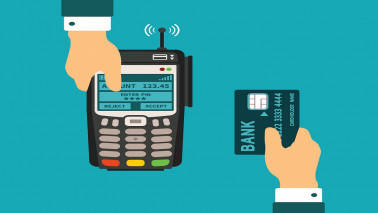As the year of digital revolution in banking comes to an end, what lies ahead?

2017! The year began with cash crunch post demonetisation that ultimately led to a year of digital banking and payments breakthrough which was followed by proliferation of digital payment channels, and players including the UPI, BHIM, BharatQR and Google Tez, Samsung Pay and WhatsApp capitalizing on the growing mobile and internet financial services.
The government withdrew 86 percent of the currency notes in circulation — (old 500 and 1000 rupee denomination).
This has changed the way consumers bank and make payments with the need to adopt and the rise in awareness of the usage of cashless payment modes. The government thronged on the benefits of demonetisation away from the originally stated benefit of tiding over black money in the country.
The government is pushing towards a cashless economy with various programs such as Make in India, Digital India and Skill India — which is expected to spur the growth of financial technology or the fintech industry. Digital payments are expected to grow from 5 percent of GDP now to 20 percent of GDP in the next 10 years, experts suggest.

The biggest revolution in the payment space was the UPI — United Payment Interface — a pet project initiated by the National Payments Corporation of India with the support of the Reserve Bank of India and the government, has seen bumper growth in its usage.
In 15 months, transactions on UPI surged from 92,000 in August 2016 to 105 million (10.5 crore) in November 2017. In value terms, the transactions jumped from Rs 3.1 crore to Rs 9,679.2 crore during the period.
During the year, a major boost was given after the government, the biggest payer of grants, purchases and subsidies, pushed online payments beyond metros. It also made the right interfaces such as BHIM (Bharat Interface for Money), BharatQR code (scan and pay), both showing strong signs of usage and incentivising card payments.
The world’s biggest technology firm, Google, followed suit with its first payment product Tez and Paypal starting its India operations. Flipkart’s PhonePe, Paytm and homegrown Hike, among others, also became the early adopters of UPI. Apart from the setting up of differentiated payments banks, players such as PayU, Bankbazaar, Rubique, Flexiloans, EarlySalary, ArthImpact and also credit improving companies such as CreditSeva and CreditMantri and numerous other facilitators also grew to aid banking and financial services to the untapped customers.
Ranjit Punja, CEO and Co-Founder of CreditMantri, a Chennai-based technology driven credit management service provider, says: “Fintech space has never been any hotter. It is the best space to be right now. We have grown more than 2.5 times in terms of customers coming on our website. Yes, definitely digitisation enables what we do and helped a lot many digital companies, although, Aadhaar and Jan Dhan was always there irrespective of demonetisation.”
Moreover, the Reserve Bank of India recognised the need to push the card payments for various category of merchants helping them reduce the merchant discount rates. Additionally, the government recently made all debit and credit card transactions up to Rs 2,000 free for the merchants and thereby the consumers.
Banks step up

The digital revolution has also led banks to push their digital products aggressively. Over the last couple of years, banks have launched mobile and payment apps such as Pockets by ICICI Bank, PayZapp by HDFC Bank, Ping Pay by Axis Bank (also buyout of FreeCharge), SBI Buddy and YONO by State Bank of India and many others. The focus is shifting to provide end-to-end services online providing other payment options in their mobile banking apps such as Truecaller and Samsung Pay. Some of them now also provide prepaid cards and small credit products.
Dipak Gupta, Joint Managing Director, Kotak Mahindra Bank, said: “Over last 3-4 years, fintechs are rising in the payments and lending space. Now, while payments is not a very large profit pool but retail lending is. Now, retail lending contributes about 25 percent from our profit pool. If fintechs start attacking that pool, it is a worry. So we are experimenting on how we can do the business faster. It is the same business but more on how do we acquire customers and do business differently. Customers are savvier today so we have to be there for them…”
Although banks have lost some share to the digital payment companies, many players are operating in collaboration mode with the banks. Banks will look at finding their niche but focus will remain on their core lending and deposit business. Despite their foray into the wallets and mobile applications space, other services such as reading and using data, facilitating payment platforms, credit bureaus and getting the best price would be outsourced to help them make better their lending decisions more efficient.
Consumer Awareness and Security
Consumer adaption has been low owing to the weak awareness in the industry given the complicated user interface and uncertainty on the success of the transactions due to its incorporeal nature as against cash, which is tangible.
Bhavin Patel, Founder & CEO, LenDenClub, a peer-to-peer (P2P) lender, said, “We are 2.5 year old now prior to demonetisation 50 of the 500 had doubts on our websites functioning and kept raising queries but today this number of 1 out of 500 customers. It has changed people’s mindset and trusting companies offering digital solutions has increased. Our loan size has grown 2.5 times in the last one year and we have originated loans worth Rs 19 crore, which a year ago was about Rs 4 crore.
Although what keeps players up at night is what happens to the security and risks to the magnanimous data.
With risks debated around the largest individual data under Aadhaar and privacy, players wait and watch on the laws that will evolve around the data, the grievance redressal around failed traansactions and cyber attacks feared at domestic and global levels.
Punja said, “Since there is lot of access of data, we are concerned about the security and we just need one waivered step and things may move differently. Aadhaar is a tremendous enabler to companies like us, yes there are risks associated with it and only a few things going wrong can change the dynamics, so we need to be very careful on the security and data storage.”
However, as digital payments are evolving and the banks along with the government and RBI are assuring more awareness and safety measures for consumers as we leap ahead.
As WhatsApp, with its over 200 million users in India, gears up to set its foot in our country’s payments business, we could be headed into what Nandan Nilekani said our “WhatsApp moment in Indian banking!”
[“Source-moneycontrol”]

